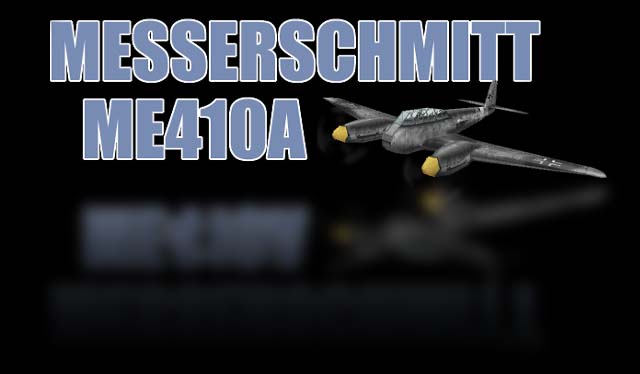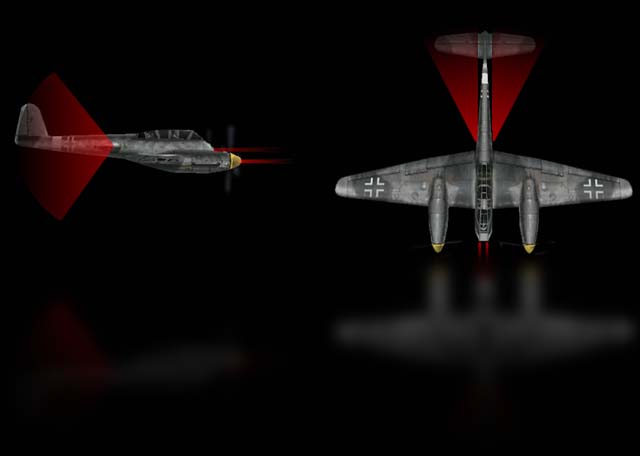
European Air War

Messerschmitt Me.410A-1 Hornisse
The Me410a was originally intended to be the quintessential close air support aircraft, but circumstances altered its use in that role. The Me210 construction program followed that of the Bf110 and failed miserably due to a complex design that was not suited to the rigors of combat. An outgrowth of this program, the Me410a was a simplified version of the Me210. The first prototype flew at the end of 1942 and two main variants came out of these trials, the A-1 (a fighter-bomber) and the A-2 (a heavy fighter). By April of 1943, 48 aircraft were delivered to the Luftwaffe. By the end of that year, over 450 Me410a's were in service.
With the Allied strategic bombing campaign in full swing, both variants were used primarily as interceptors against inbound airstrikes. The basic Me410a mounted four standard 7.92mm machine guns and two 20mm cannons, which gave them fairly formidable offensive firepower; but some later models even added 30mm and 50mm cannons since the weight loading originally reserved for their bomb payloads was not being utilized.
Messerschmitt Me.410A-1 Hornisse
- Wingspan: 53 ft. 7 in.
- Length: 40 ft. 11 in.
- Height: 14 ft. 0 in.
- Engine: 2 x Daimler-Benz DB 603A rated at 1,750 hp.
- Loaded Weight: 23,483 lb.
- Maximum Speed: 388 mph.
- Service Ceiling: 32,800 ft.
- Combat Radius: 480 miles
- Armaments: 2 x 20mm MG-151 cannons, 4 x 7.92mm MG-17 machine guns, 2 x 13mm MG-131 machine guns in rear turrets, 2,200 lbs. of bombs
- Defensive Fire Arc:

This material was included in the original 1998 release of European Air War by Microprose.
